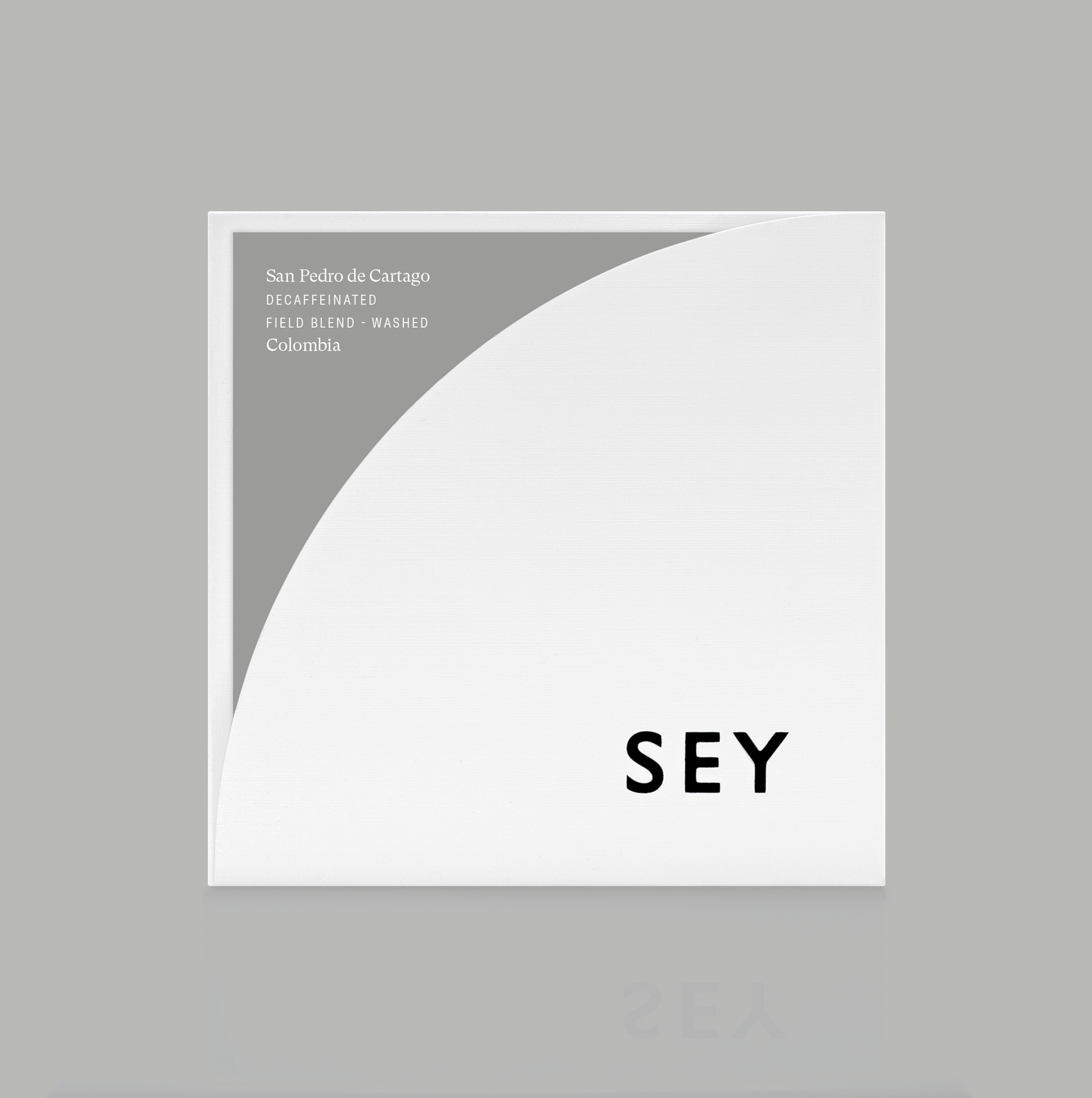
Hand picked at peak ripeness. Floated to further remove defects. Depulped. Dry fermented for 12-30 hours. Dried on patios for 7 days. Decaffeinated with ethyl acetate.
Caturra, V. Colombia, Castillo
Nariño
1,900 masl
August, 2020
Hand picked at peak ripeness. Floated to further remove defects. Depulped. Dry fermented for 12-30 hours. Dried on patios for 7 days. Decaffeinated with ethyl acetate.
ABOUT SAN PEDRO DE CARTAGO
Tucked into the mountains of Nariño, and just north of the famous coffee growing region of Buesaco, San Pedro de Cartago is a small town where the majority of residents are coffee producers. The producers in this area have an average of just a few hectares of land, and in addition to coffee, many of them grow a small amount of food crops for their own consumption.
ABOUT SUGARCANE ETHYL ACETATE DECAFFEINATION
This decaffeinated coffee was processed at Descafecol, a company based on the outskirts of the town of Manizales, Colombia. The process for decaffeination begins with sugarcane grown a few hours south of Manizales. The sugarcane is processed into molasses, which is then fermented to create ethanol, and subsequently processed with acetic acid to create ethyl acetate. Green coffee is put into tanks and steamed to open up the coffee’s chemical structure and enable the extraction of the caffeine molecules. The steamed coffee is then soaked in ethyl acetate solution multiple times, during which the caffeine molecules bond with the ethyl acetate and are ultimately removed and washed away with the solution. This process removes a minimum of 97% of the caffeine. After the extraction process, the coffee is steamed once more to remove any remaining traces of the ethyl acetate solution, and then sent to dryers to bring the coffee back down to its original moisture content.
ABOUT THIS FIELD BLEND
This is a field blend of the three most commonly grown varieties in Colombia: Castillo, V. Colombia, and Caturra. Both Castillo and V. Colombia are Catimor hybrids, which give them high disease resistance. Caturra, on the other hand, is a natural mutation of Bourbon, and is very susceptible to disease.
Pricing Details
Farm Gate (Local)
1.22MM COP/Carga
Farm Gate (USD)
~$3.28/KG
FOB
$5.06/KG
FOT
$8.55/KG
The cost of getting a coffee from cherry to beverage varies enormously depending on its place of origin and the location of its consumption. The inclusion of price transparency is a starting point to inform broader conversation around the true costs of production and the sustainability of specialty coffee as a whole.